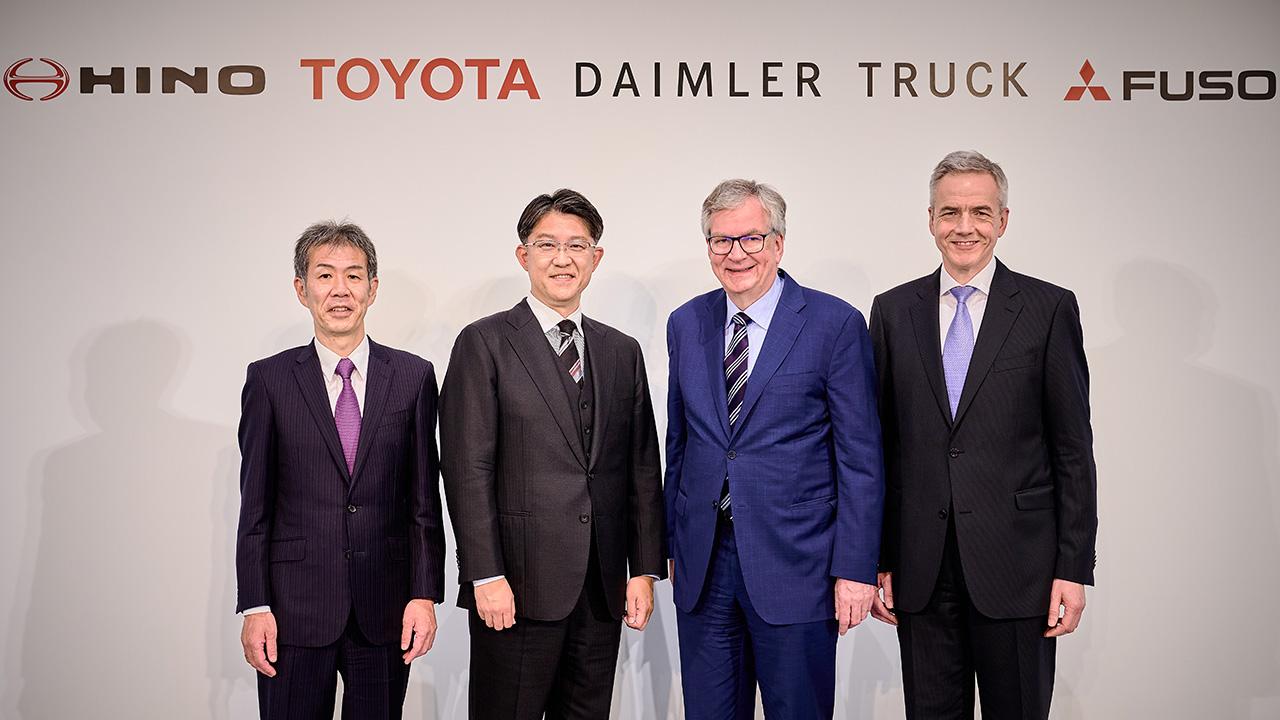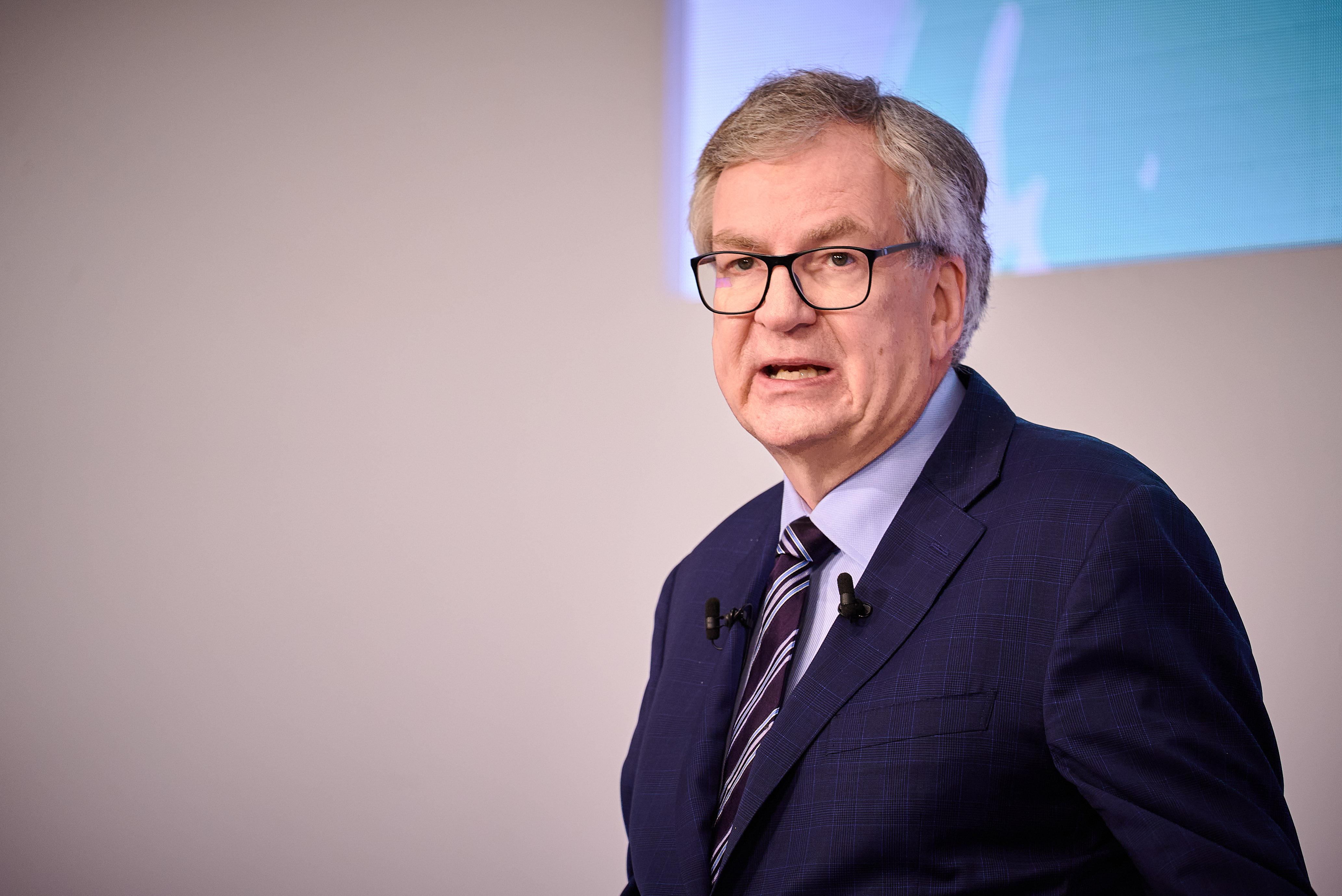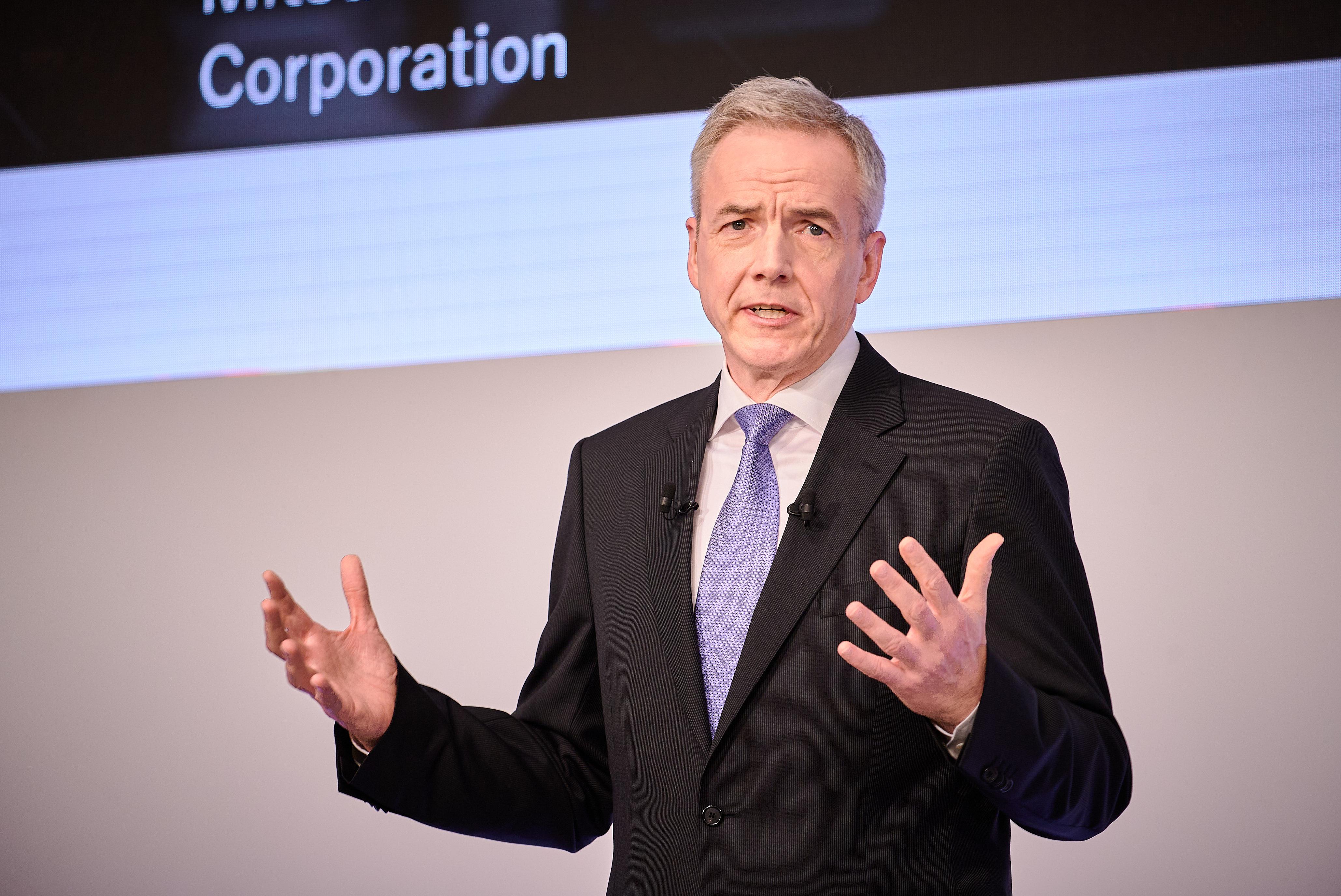
Two of Japan's top commercial vehicle manufacturers are merging. Together with parent companies Daimler Truck and Toyota, they seek the competitive strength to survive in the decarbonization age and shape the future of commercial vehicles.
Scale is key – CEO Daum (Daimler Truck)
According to President Sato, the global medium- and heavy-duty commercial market is around 3 to 3.5 million vehicles, of which Hino and Mitsubishi Fuso make 250,000 and 150,000 respectively, or a combined total of 400,000 vehicles.
CEO Martin Daum of Daimler Trucks, the world’s largest truck manufacturer, similarly emphasized economies of scale as the key to success.
He also spoke about the significance of merging two of Japan’s leading commercial vehicle companies, and the challenges that lay ahead.
CEO Daum

I’ve worked in this industry for more than three decades, and this day definitely is one of the most special days in my entire career.
Because the news we can share with you today is truly great news.
We intend to link the future of two amazing companies, and to shape the future of the commercial vehicle industry in Japan, in Asia, and even beyond. Let me give you some context.
At Daimler Truck, we are very proud of our products, each and every one of the 520,000 trucks and buses we sold in 2022—in North America with our Freightliner brand, in Europe with our Mercedes-Benz brand, and of course in Asia with our Fuso brand.
I’m sure our partners here on stage feel exactly the same about their products. That’s because trucks and buses truly fulfill a purpose.
With our vehicles, our customers keep supermarkets, factories, and construction sites up and running. And they bring people to work, to school, to their favorite destinations.
In short, trucks and buses keep the world moving. This is true today, and it will also be true tomorrow.
Though this will not change, one thing will change: tomorrow, trucks and buses will need to be emission-free. This means our products will become even more amazing.
They will not only keep the world moving, but they will do so in a sustainable way. So there’s an absolutely compelling future ahead of us, and at Daimler Truck we can’t wait to make this future a reality.
We are fully committed to leading the technological transformation and to fighting climate change. At the end of 2020, we already had eight zero-emission trucks and buses in mass production.
One prime example is our Fuso eCanter. We first launched our eCanter back in 2017 as a true pioneer. Just recently, we introduced our next-generation eCanter, which is already available in 70 variants.
So far, so good. But as we are accelerating towards zero emissions, there is one big challenge, and this is the required funding.
The transformation of our industry means we have to fund several new drive technologies at the same time: batteries, hydrogen-based fuel cells, and potentially also hydrogen internal combustion engines.
This is quite a stretch even for the leading companies in our industry. There is only one way to make this parallel tech development work: economies of scale. Scale is key.
And today, we are making a bold move in this respect. We intend to combine the forces of two of the three largest commercial vehicle manufacturers in Japan, and this will increase scale dramatically.
The combined Fuso-Hino business would have full access to Daimler Trucks’ technology on the heavy-duty side. This merger will be a complete game changer.
I’m glad that we’ve found the perfect partner who did the very same analysis, and who has the very same vision.
What we are announcing today does not just have the potential to make our company stronger; creating a leading domestic company can also revitalize the Japanese economy, to make our customers stronger by ensuring an even stronger product lineup, and to boost the transformation to zero-emissions transport, and this will benefit all of us.
The foremost player in Asian transportation – CEO Deppen (Mitsubishi Fuso)
In their speeches, President Sato and CEO Daum both pointed to the need for extensive collaboration in the commercial domain to achieve widespread adoption of CASE and hydrogen technologies.
Particularly for hydrogen technologies such as fuel cells, Daimler Truck and Toyota possess particular strengths in commercial and passenger vehicles respectively. They foresee a complementary relationship that expands the range of compatible vehicles.
Mitsubishi Fuso CEO Karl Deppen expressed his hopes for the collaborative possibilities that will open up through the merger with Hino.
CEO Deppen

Let me also give you the Fuso point of view. I’ll begin with some basic background.
The Fuso brand was founded by the Mitsubishi Group over 90 years ago. Daimler took shares in Mitsubishi Fuso in 2003, and now owns 89% of the stock.
We sell commercial vehicles in around 170 markets, and Mitsubishi Fuso products are well known for their efficiency, reliability, and superior safety.
As leaders in electric light-duty trucks, we recently also started selling the new eCanter. With all that success and history, why are we now tying up with Hino?
Simply put, the world is changing. And our industry needs to change with it.
Japan’s economy and the societies of Asia need state-of-the-art transportation. At the same time, Japan has committed to be carbon neutral by 2050.
We take it as our task to be part of the solution to decarbonize transportation.
Today’s customers demand even more. Connectivity, automation, electrification—a whole range of advanced services and technologies to make logistics as safe, as efficient, and as profitable as possible, all while causing the least possible harm to the environment.
I’ll be frank—developing takes enormous investment, resources, and also expertise.
To continue to offer our customers value while also staying successful ourselves, we need partners and we need industrial scale.
And who better to tie up with than Hino Motors, a company as dedicated to the commercial vehicle industry as ourselves.
Together, we will become a force—a strong Japanese truck company with a complementary portfolio of products, a massive service and dealer network, and a workforce of highly experienced, motivated employees across the globe.
With this bold move, we will more than double our resources.
That means increased access to knowledge and expertise, and a wider network of suppliers and infrastructure. More people working together to develop technology faster.
It means better value for our customers and provides opportunities for our employees. It will benefit our suppliers and our dealers. And it will safeguard the return to our shareholders as well.
This merger will position us as the foremost player in the Asian transportation industry, strong enough to compete with all the new brands we see entering the market, especially outside of Japan.
I am really looking forward to all the new possibilities this collaboration will open up.
Another important point for me is the nature of that collaboration. From the time this discussion first started, I knew we needed a win-win solution for all parties involved.
Merging two companies that have traditionally been competitors is, of course, a challenge.
This collaboration can only work if we join as equals—respecting each other, respecting each other’s strengths, and working together to make a future brighter than either of us could find alone.
That is why I am so satisfied with the terms we have set forth here today.
One company with two strong, distinct brands, supported by the expertise and resources of Toyota and Daimler Truck.
Of course, there is still a lot of work to do, a lot of questions to answer here in Japan and in all our markets.
But that’s why we are going to take our time and do things right.
We are going to check every aspect of the project carefully over the next 18 months, with the target of completing the transaction by the end of 2024.
It is a daunting task, but I have full confidence not only in the fantastic team of Daimler Truck and Mitsubishi Fuso, but also in our new friends at Toyota and Hino.
Let me close by saying “Thank you” and “Welcome” to them as well.
I am so excited to see what we will achieve in the coming years. We are going to grow together.

